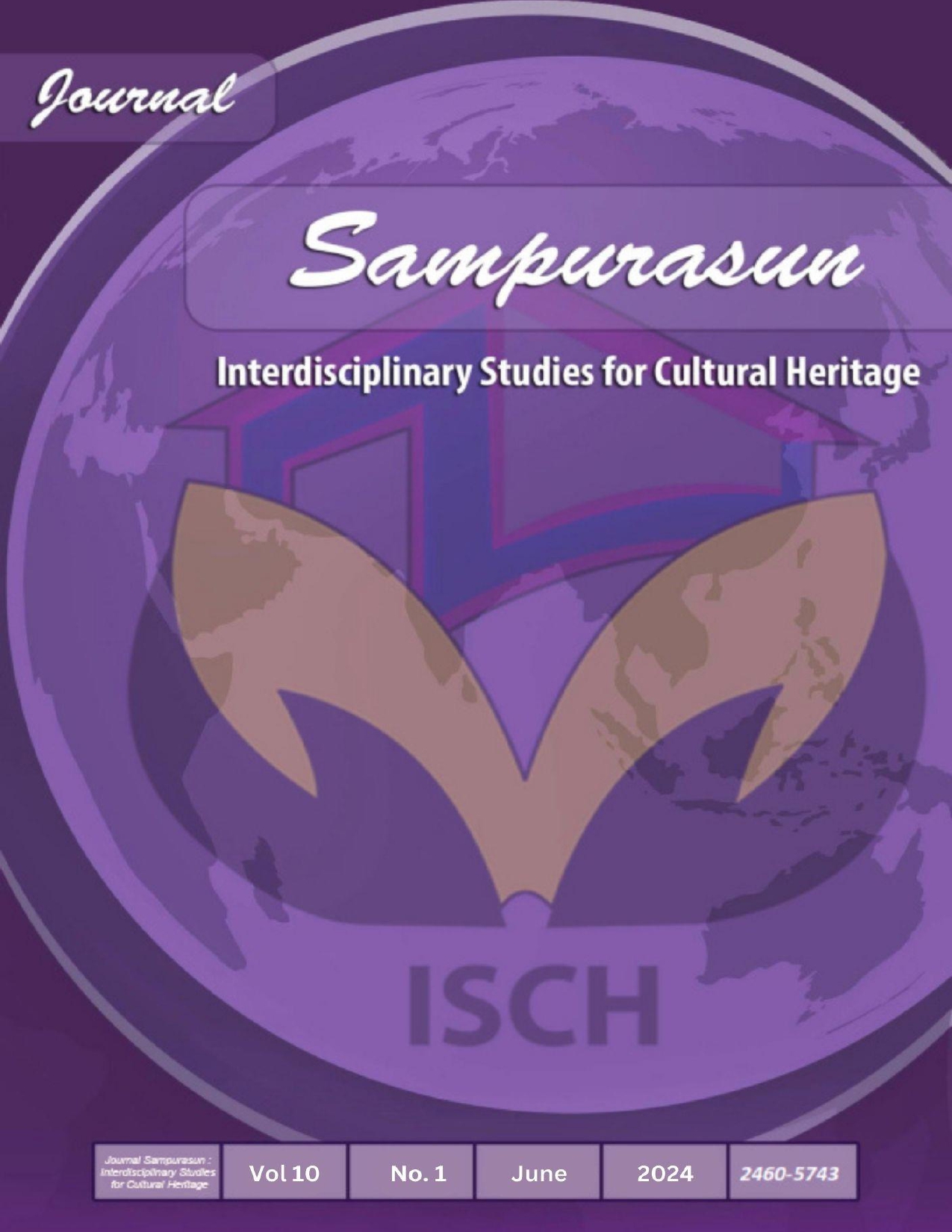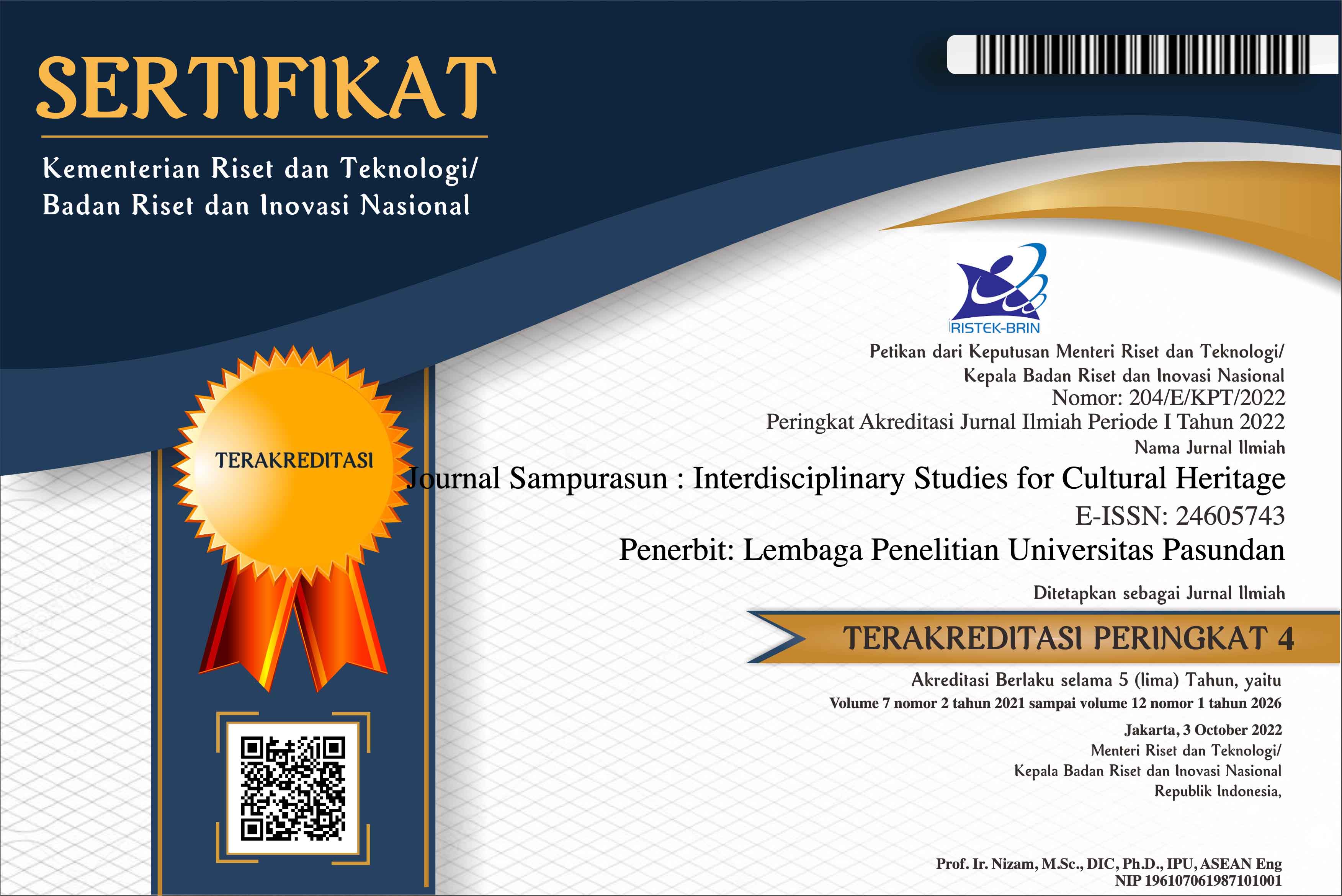ACADEMIC WRITING 2.0: STUDENTS’ PERCEPTIONS ON ACADEMIC WRITING WITH BLENDED LEARNING MODE IN UNIVERSITY CURRICULUM
DOI:
https://doi.org/10.23969/sampurasun.v10i1.13810Keywords:
Academic Writing, Blended Learning, Students’ Perception, 21st Century Skills, Writing CompetenceAbstract
This research explores students' perceptions of implementing a Blended Learning model in an academic writing course to address challenges in foreign language academic writing. 40 respondents participated, and mixed-methods, including WEBLEI Survey and Case Study 2.0 frameworks, were employed. Data collection involved tests, surveys, asynchronous interviews, and Focus Group Discussions. Statistical analysis indicated positive student attitudes, with mean scores for Interaction, Access, Response, and Result on the WEBLEI Scale being 3.85, 4.12, 4.07, and 4.10, respectively. Results suggest that students benefitted from flexibility in learning processes, access to learning, satisfaction with the learning environment, and pace of learning in the Blended Learning model.
Downloads
References
Akkoyunlu., B., & Soylu., M.Y. (2015). A study of student’s perceptions in a blended learning environment based on different learning styles. International Journal of Education and Development using Information and Communication Technology(IJEDICT), 11, 80-100.
Alonso, F., Lopez, G., Manrique, D., & Vines, J. (2005). An instructional model for web-based e-learning education with a blended learning process approach. British Journal of Educational Technology, 36(2), 217-235.
Baker, W., & Bricker, R. H. (2010). The effects of direct and indirect speech acts on native English and ESL speakers’ perception of teacher written feedback. System, 38, 75-84.
Bell, D. C., & Elledge, S.R. (2008). Dominance and peer tutoring sessions with English language learners. The Learning Assistance Review, 13, 17-30.
Bersin, Josh. 2004. The Blended Learning Book: Best Practices, Proven Methodologies, and Lesson Learned. Pfeiffer. A Willey Imprint.
Bielawski, L. and Metchalf, D. 2009. Blended eLearning: Integrating Knowledge, Performance, Support, and Online Learning. HRD Press. Amherst. Massachusetts.
Brown, H. Douglas. 2007. Principles of Language Learning and Teaching. USA: Longman.
Chan, A. (2013). Just write: Composition guide for upper secondary and integrated program. Singapore: Marshall Cavendish Education.
Chang, V., & Fisher, D. (2003). The validation and application of a new learning environment instrument for online learning in higher education. In M. S. Khine & D. Fisher (Eds.), Technology-rich learning environments: A future perspective (pp. 1-20). Singapore: World Scientific Publishing Co. Pte. Ltd.
Chin, P., Koizumi, Y., Reid, S., Wray, S., & Yamazaki, Y. (2012). Academic writing skill: Students’ Book 1. New York: Cambridge University Press.
Clark, R. T., & Mayer, R. E. (2003). E-Learning and the Science of Instruction. San Francisco: Pfeiffer.
Council of Europe (2001). Common European framework of reference for languages: Learning, teaching, assessment. Cambridge, England: Press Syndicate of the University of Cambridge.
Creswell, J. W. 1998. Qualitative Inquiry and Research Design: Choosing among Five Traditions. California: Sage Publication, Inc.
Creswell, J. W. 2002. Educational Research: Planning, Conducting, and Evaluating Quantitative and Qualitative Approaches and Research. Upper Saddle River, NJ: Merrill/Pearson Education.
Dougiamas, M. & Taylor, P. (2003). Moodle: Using Learning Communities to Create an Open Source Course Management System. In D. Lassner & C. McNaught (Eds.), Proceedings of ED-MEDIA 2003--World Conference on Educational Multimedia, Hypermedia & Telecommunications (pp. 171-178). Honolulu, Hawaii, USA: Association for the Advancement of Computing in Education (AACE). Retrieved March 23, 2019 from https://www.learntechlib.org/primary/p/13739/.
Dudeney, G and Hockly, N. 2007. How to Teach English with Technology. Pearson: Longman.
Finn, A. & Bucceri, M. 2004. A Case Study Approach to Blended Learning. http://www.centra.com/download/whitepapers/CaseStudy-BlendedLearning.pdf
Fraenkel, Jack Rand Norman E. Wallen. 2007. How to Design and Evaluate Research in Education. New York: McGraw-Hill Publishing Company.
Fulcher, N.G. & Davidson, Fred. 2008. Language Testing and Assessment: An Advanced Resource Book.
Garrison, D. R. & Kanuka, H. 2004. Blended Learning: Uncovering Its Transformative Potential in Higher Education. The Internet and Higher Education, 7(2), 95-105.http://dx.doi.org/10.1016/j.iheduc.2004.02.001
Hatch, E., and Farhady, H. 1982.Research Design and Statistics for Applied Linguistics. New York, NY: Newbury House.
Hyland, K. (2004). Patterns of engagement: Dialogic features and L2 student’s writing. In L.
Ravelli & R. Ellis (eds.), Academic Writing in Context: Social-functional Perspectives on Theory and Practice. London: Continuum.
Jalilifar, A. (2010). Thematization in EFL students‟ composition writing and its relation to academic experience. RELC Journal, 41, 31-45.
Johnson, Erin & Perry, Justin & Shamir, Haya. 2010. Variability in Reading Ability Gains as A Function of Computer-Assisted Instruction Method of Presentation. Computers & Education. 55. 209-217. 10.1016/j.compedu.2010.01.006.
Kadri, S.& Hamada, H. 2016. Blended Learning in Academic Writing: Realities and Perspectives. Revue Sciences Humaines. n°45, Juin 2016– Tome A, pp 171- 196. Université des Fréres Mentouri - Constantine 1, Algérie, 2016.
Kern, R. (2000). Literacy and Language Teaching. Oxford: OUP.
Koehler, M.J., & Mishra, P. (2009). What Is technological pedagogical content knowledge? Contemporary Issues in Technology and Teacher Education (CITE), 9(1), 60-70.
Krashen, S. (1984). Writing: Research, theory and applications. Oxford: Pergamon Institute of English.
Kupetz, Rita & Ziegenmeyer, Birgit. (2005). Blended learning in a teacher training course: Integrated interactive e-learning and contact learning. ReCALL. 17. 179-196. 10.1017/S0958344005000327.
Latchem, C. and Jung, Ingsung. 2010. Distance and Blended Learning in Asia. Routledge: New York and London.
Lavelle, E. & Bushrow, K. (2007). Writing approaches of graduate students. Educational Psychology, 27(6), 807-822. Doi: 10.1080/01443410701366001.
Levy, M. 1997. Computer-Assisted Language Learning: Context and Conceptualization. New York: Oxford University Press.
Machin, Anne& Ward, Russ. 2007. Mirror Images: Reading and Writing Arguments. Pearson: USA.
Marsh, Debra. 2012. Blended Learning: Creating Learning Opportunities for Language Learners. Cambridge University Press. USA.
McGee P. & A. Reis. 2012. Blended Course Design: A Synthesis of Best Practices. Journal of Asynchronous Learning Networks 16.4, 7-22.
Miyazoe, T. & Anderson, T. (2010). Learning outcomes and students’ perceptions of online writing: Simultaneous implementation of a forum, blog, and wiki in an EFL blended learning setting. System, 38, 185-199.
Nunan, D. (1999). Second language teaching and learning. Boston, MA: Heinle & Heinle.
Neumeier, P. (2005). A closer look at blended learning: Parameters for designing a blended learning environment for language teaching and learning. ReCALL 17(2), 163–178.
Osguthorpe, R. T., & Graham, C. R. (2003). Blended learning environments: Definitions and directions. Quarterly Review of Distance Education, 4(3), 227-233.
Partnership for 21st Century Skill. 2012. 21st Century Skills, Education and Competitiveness. A Resource and Policy Guide.www.21centurysills.Org
Richards, J. C. (2001). Curriculum development in language teaching. Cambridge: Cambridge University Press. http://dx.doi.org/10.1017/CBO9780511667220
Richards, Jack C and Renandya Willy A. 2002. Methodology in Language Teaching an Anthology of Current Practice. Cambridge: Cambridge University Press.
Rovai, A. P., Baker, J. D., & Ponton, M. K. (2013). Social science research design and statistics: A practitioner’s guide to research methods and IBM SPSS. Chesapeake, VA: Watertree Press LLC.
Saine, Nina & Lerkkanen, Marja-Kristiina & Ahonen, Timo & Tolvanen, Asko & Lyytinen, Heikki. 2011. Computer-Assisted Remedial Reading Intervention for School Beginners at Risk for Reading Disability. Child development. 82. 1013-28. 10.1111/j.1467-8624.2011.01580.x.
Sharma, P. & Barrett, B. (2007). Blended learning: Using technology in and beyond the language classroom. London: Macmillan.
Tashakkori, A., and Teddlie, C. (Eds.). 2003. Handbook on Mixed Methods in the Behavioral and Social Sciences. Thousand Oaks, Ca: Sage Publications.
Thorne, Kaye. 2003. Blended Learning: How to Integrate Online and Traditional Learning. Kogan Page.
Tobin, K. (1998). Qualitative perceptions of learning environments on the world wide web. Learning Environments Research, 1, 139-162.
Uyanto, Stanislaus, S. 2009. Pedoman Analisis Data dengan SPSS Edisi 3 [Guidelines for Data Analysis with SPSS Edition 3].Yogyakarta: Graha Ilmu.
Walvoord, B.E. (2014). Assessing and improving student writing in college: A guide for institutions, general education, departments, and classrooms. San Francisco, CA: Jossey-Bass.
Wilson, Diann and Smilanich, Ellen. 2005. The Other Blended Learning: A Classroom-Centered Approach. Pfeiffer. A Willey Imprint.
Wold, K. A. (2011). Blending theories for instructional design: creating and implementing the structure, environment, experience, and people (SEEP) model. Computer Assisted Language Learning, 24(4), 371-382.
Downloads
Published
Issue
Section
License
Copyright (c) 2024 Journal Sampurasun : Interdisciplinary Studies for Cultural Heritage

This work is licensed under a Creative Commons Attribution 4.0 International License.
Copyright Notice
Authors should not withdraw their submitted papers because the withdrawal wastes voluntary works devoted by an associate editor and reviewers. But, we accept the withdrawal of a submitted paper if authors have unavoidable reasons. In the event that a manuscript is to be withdrawn from submission to Sampurasun Journal, a letter must be sent to the editorial office requesting withdrawal by e-mail (sampurasunjournal@unpas.ac.id) with its scanned PDF file, before the notification of acceptance for publication.
The withdraw request letter must include the following information. Paper ID, Paper title, Authors names, Reason why the paper must be withdrawn, and Date and signatures of all the authors (or signature of the contact author).
If only the contact author signs the letter, he/she must obtain the agreement of the withdrawal from all the other authors and the letter must include the description that all the other authors agreed the withdrawal. The journal will not withdraw a manuscript from peer review until such a letter has been received. Authors must not assume their manuscript has been withdrawn until they have received appropriate notification from the editorial office. Withdrawal of a manuscript subsequent to acceptance for publication will only be granted in the most exceptional of circumstances.
After the paper is accepted for publication, the withdrawal is not permitted in principle. The authors must always pay the charge even if the withdrawal is permitted. Any request of withdrawal that does not follow the above procedure is treated as invalid. If illegal submission, e.g., plagiarized or duplicate submission, is found for a paper, the withdrawal of the paper will never be permitted and the authors will be punished based on the rule. It is not acceptable practice to withdraw a manuscript in the event of acceptance at another journal. This constitutes dual submission. The editorial office of the other journal will be notified of your actions. In such circumstances Sampurasun ISCH may chose to impose appropriate punitive action subject.
Withdrawal Penalty
Author is not allowed to withdraw submitted manuscripts, because the withdrawal is waste of valuable resources that editors and referees spent a great deal of time processing submitted manuscript, money and works invested by the publisher. If author still requests withdrawal of his/her manuscript when the manuscript is still in the peer-reviewing process, author will be punished with paying $200 per manuscript, as withdrawal penalty to the publisher. However, it is unethical to withdraw a submitted manuscript from one journal if accepted by another journal. The withdrawal of manuscript after the manuscript is accepted for publication, author will be punished by paying US$500 per manuscript. Withdrawal of manuscript is only allowed after withdrawal penalty has been fully paid to the Publisher. If author don't agree to pay the penalty, the author and his/her affiliation will be blacklisted for publication in this journal. Even, his/her previously published articles will be removed from our online system.


















